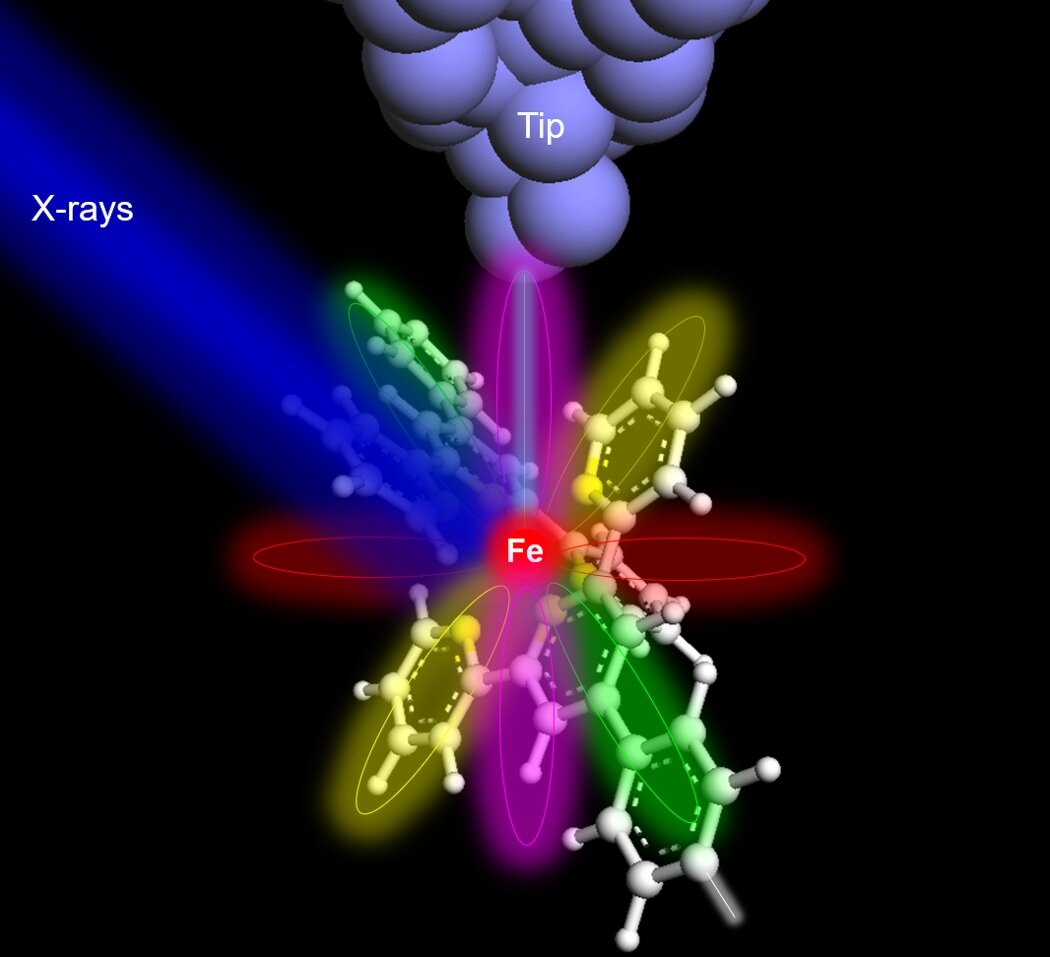From phys.org

When X-rays (blue color) illuminate onto an iron atom (red ball at the center of the molecule), core level electrons are excited. X-ray excited electrons are then tunnel to the detector tip (gray) via overlapping atomic/molecular orbitals, which provide elemental and chemical information of the iron atom. Credit: Saw-Wai Hla
________________________________________________________________________________________________
...
For demonstration, the team chose an iron atom and a terbium atom, both inserted in respective molecular hosts. To detect X-ray signal of one atom, the research team supplemented conventional detectors in X-rays with a specialized detector made of a sharp metal tip positioned at extreme proximity to the sample to collect X-ray excited electrons—a technique known as synchrotron X-ray scanning tunneling microscopy or SX-STM. X-ray spectroscopy in SX-STM is triggered by photoabsorption of core level electrons, which constitutes elemental fingerprints and is effective in identifying the elemental type of the materials directly.
According to Hla, the spectrums are like fingerprints, each one being unique and able to detect exactly what it is.
...

